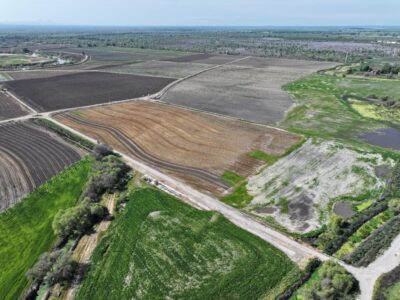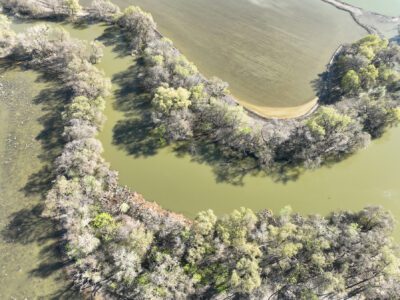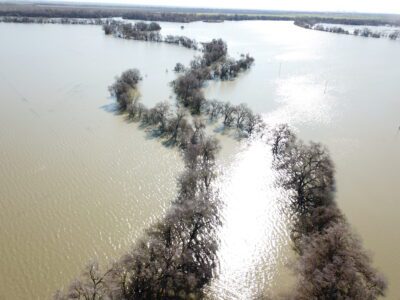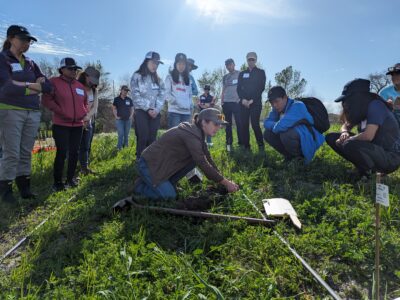Every spring, if natural conditions prevail, the vertical banks of northern California rivers should be full of holes, a dozen or so in places, sometimes more than 100. Along meandering riverbanks, these holes are made by bank swallows, small birds with white bellies and brown backs.
There is something special about the way California’s rivers were formed, in particular the Sacramento, that bank swallows have evolved to rely upon. Millennia of sediment washing down from the mountains into the Sacramento Valley has created “really significant habitat,” says Ron Melcer, Senior Environmental Scientist for California State Parks, “second only to the Great Lakes in terms of how many birds it can support.”

In 1998, the bank swallow was chosen for River Partners’ logo because of the essential relationship it has with the natural processes of the river. “The bending in the river in our logo is to signify meandering channels and the bank swallow is to signify that wildlife really need that active river,” says John Carlon, River Partners’ co-founder and retired president. “Every year bank swallows are building their nests in an eroding bank, and at the end of the day their survival is dependent on a river that’s free to move and is not locked and contained.”
Our new logo says more about our mission
River Partners is updating our logo for the first time in more than 20 years, but the bank swallow – still emblematic of our mission – is remaining front and center. The addition of a horizon behind the swallow and the meandering river completes the message: River Partners doesn’t just bring life back to the water, but to the entire riparian ecosystem.
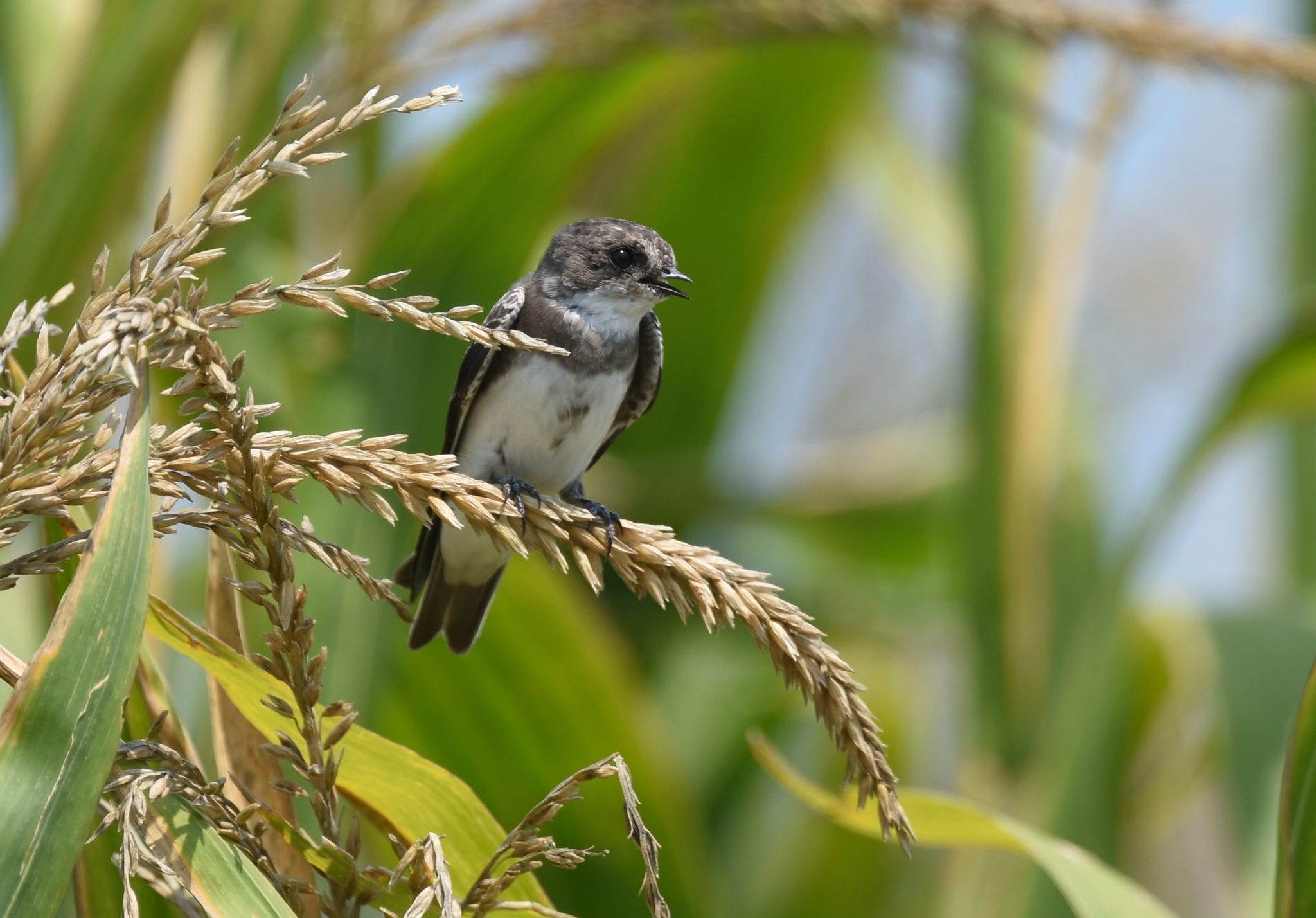
Our work helps the bank swallow and other native species adapt to 150 years of policies and practices designed to constrict water to increasingly incised channels. “When the dams went in there was a reduction in the stream power and a reduction in river meander,” says Melcer, “but the thing that’s been really significant in shutting down the processes is really the stabilization of the banks.” Specifically, decades of concrete, debris, and rubble has been dumped on the river banks in a desperate attempt to keep water from damaging valuable pumps and structures, and the consequences have been devastating for the bank swallow. Through the 1990s, the bank swallow population declined by more than half.
Rivers are a dynamic system,” says Carlon. “It’s not just the water, it’s the entire river including the floodplain. The rivers need to move. The whole riparian forest ecosystem is really driven by those fluvial geomorphic processes.”
Helping rivers help themselves
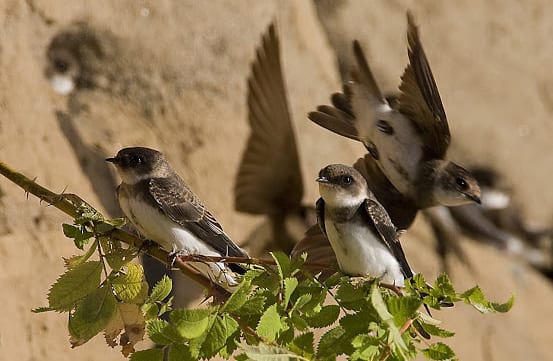
When the natural processes of river movement are halted, it isn’t just the route of the river that changes, it’s also the habitat that bank swallows and other species depend on. Over the years, River Partners’ work has proven that letting rivers be rivers is one of the first steps in restoring life and health to riparian ecosystems. In 2012, River Partners (with help from an entire community of partners) acquired the Dos Rios Ranch, and immediately stopped fighting the battle against erosion and deposition.
This passive technique for improving wildlife habitat lets the river do a large part of the work, as we saw in 2017 when floodwaters rearranged some levees and berms and moved the confluence of the Tuolumne and San Joaquin rivers south about 115 feet. That year, over 16 acres of new beaches opposite larger cut banks appeared at Dos Rios and the San Joaquin River National Wildlife Refuge, and in 2019 this acreage grew, cutting away riverbank in new places on the ranch.
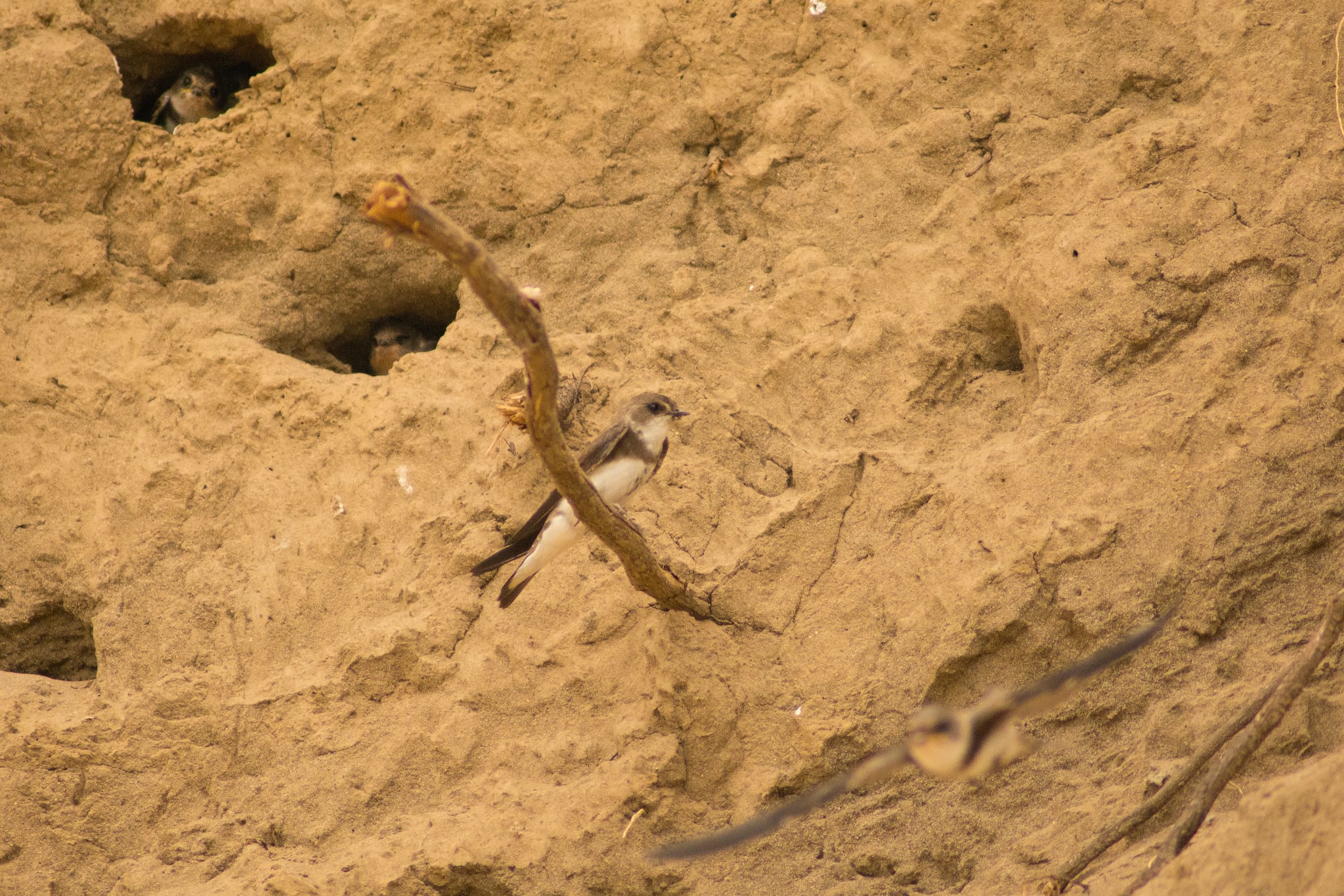
We stepped back and asked the river to work for us. Unsurprisingly, the river adapted to new conditions, overcoming the disconnect between the channel and the floodplain and providing dozens of acres of new, easily inundated floodplain habitat.
Our new logo is subtly different and more inclusive of our complete approach to river revitalization. Taken as a whole, the naturally meandering river, the riparian habitat that surrounds it, and the bank swallow soaring overhead are symbolic of everything we do to bring life back to the entire riparian ecosystem, from tree to river to riverbank, and to the wildlife that depends on it all.
Header photo by David Bogener.

